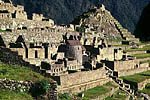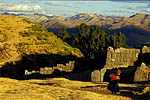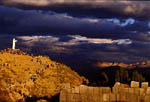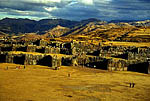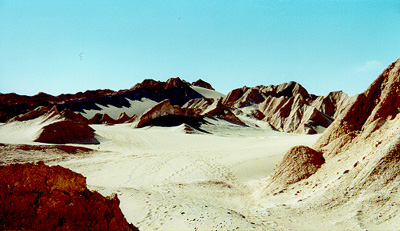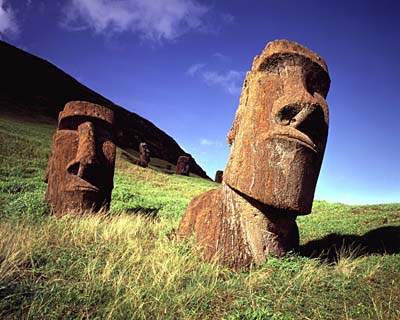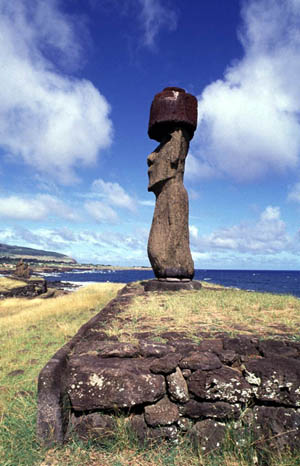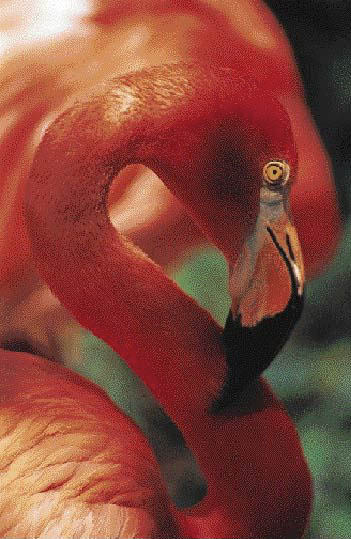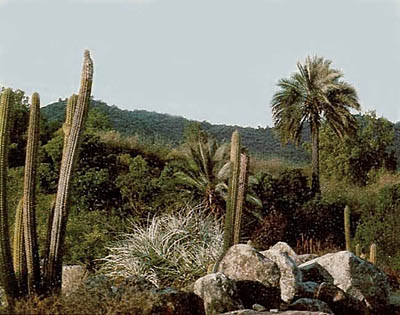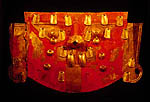![]()
Legacy of the Incas
Machu Picchu Luxury Tours
Peru:
Machu Picchu - Lake Titicaca
(11 days/10 nights)
Machu Picchu Luxury Tours
Peru:
Machu Picchu - Lake Titicaca
(12 days/11 nights)
Empire of the Sun
Machu Picchu Luxury Tours
Peru:
Machu Picchu - Lake Titicaca
(14 days/13 nights)
Ancient Civilizations of Peru
Machu Picchu Luxury Tours
Peru:
Colca Canyon - Machu Picchu
Lake Titicaca
(16 days/15 nights)
Archaeological & Ecological
Treasures
Machu Picchu Luxury Tours
Peru & Ecuador:
Galapagos - Machu Picchu
Lake Titicaca (or Amazon)
(18 days/17 nights)
Grand Tour of the Inca Empire
Machu Picchu Luxury Tours
Peru:
Colca Canyon - Amazon
Machu Picchu- Lake Titicaca
(22 days/21 nights)
Ancient & Colonial Capitals
Machu Picchu Luxury Tours
Peru:
Machu Picchu
(10 days/9 nights)
Inca Trail to Machu Picchu
Machu Picchu Luxury Tours
Peru:
Machu Picchu
(13 days/12 nights)
Machu Picchu & Galapagos
Machu Picchu Luxury Tours
Peru & Ecuador:
Machu Picchu - Galapagos
(15 days/14 nights)
Galapagos & Machu Picchus
Machu Picchu Luxury Tours
Ecuador & Peru:
Galapagos - Machu Picchu
(18 days/17 nights)
Enchanted Isles of the Galapagos
Machu Picchu Luxury Tours
Ecuador:
Galapagos
(11 days/10 nights)
Galapagos & the Kingdom of Quito
Machu Picchu Luxury Tours
Ecuador:
Galapagos - Andes
(16 days/15 nights)
Galapagos & the Amazon
Machu Picchu Luxury Tours
Ecuador:
Galapagos - Amazon
(16 days/15 nights)
Historic Haciendas of the Andes
Machu Picchu Luxury Tours
Ecuador:
Cotopaxi - Antisana - Otavalo
(7 days/6 nights)
© 2013 Inka's Empire Corporation.
All rights reserved.
![]()
Regions of Chile
Luxury Chile Tours & Travel
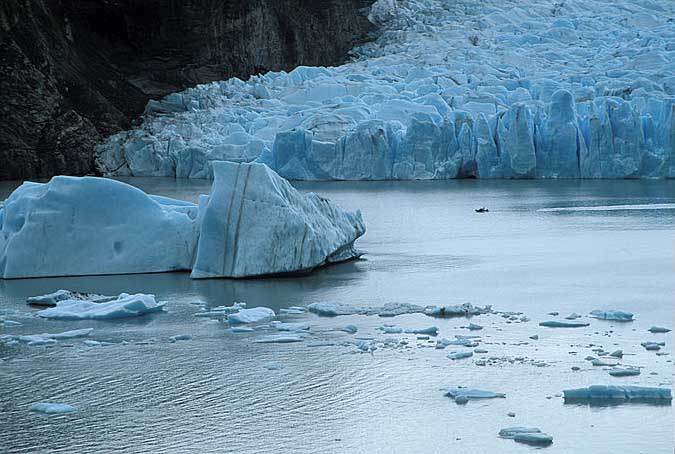
Navigation to Grey Glacier,
with boat in distance, Torres del Paine, Patagonia.
Photo: Radek Tezaur. Luxury Chile Tours & Travel.
The regions for touring, in order of popularity, are Patagonia's Torres del Paine, the Atacama Desert, the Lake District, Easter Island, the Altiplano and the Central Valley.
Patagonia's Magellan Province & Torres del Paine
Patagonia is the scene of the world's great adventurers. It is the magic word we all have in mind when we think about southern Chile and Argentina. Even if we know little of the place, the name itself inhabits our subconscious, whispering of an unknown finger of the earth, "el fin del mundo". We imagine fjords, glaciers, pampas, lonely huasos (cowboys) on their horses herding the sheep, flourishing vegetation, the Andean mountain range and, of course, the world-class Torres del Paine National Park.
A visit to Patagonia is almost a must for every visitor to Chile. Historically, Patagonia starts south of the city of Temuco (or the city of Neuquen on the Argentinian side). But geographically and emotionally it starts where the Andes breaks apart into an archipelago of mountains, islands and fjords as long as the distance from Copenhagen to Rome.
Grey Lake and Cerro
Ferrier, Torres del Paine, Patagonia.
Photo: Dominic Sawyer. Luxury Chile Tours & Travel.
The first Europeans to lay eyes on this landscape were led by Ferdinand Magellan, who pioneered passage through the treacherous strait that now bears his name. His expedition named the mainland "Tierra de los Patagones", unwittingly spawning the myth of a race of Patagonian giants. To the south, they saw the horizon darkened by smoke from the natives' fires, and named the great island "Tierra del Fuego".
Punta Arenas became one of the wealthiest settlements in South America. Remnants of its heyday are still visible in downtown Punta Arenas, where huge mansions and boulevards give you an impression of what life was like at the end of the world, 100 years ago. When driving from Punta Arenas to Puerto Natales, you can visit the penguin colony at the Bay of Otway. Every year in springtime, the Magellan penguins come back to reproduce and spend the first few months after the birth of the next generation. Puerto Natales is the starting point for visits to Bernardo O'Higgins National Park, which is located at the end of the Last Hope Fjord and has to be reached by boat. During the summer, several cutterboats offer full-day excursions to the Balmaceda and Serrano glaciers.
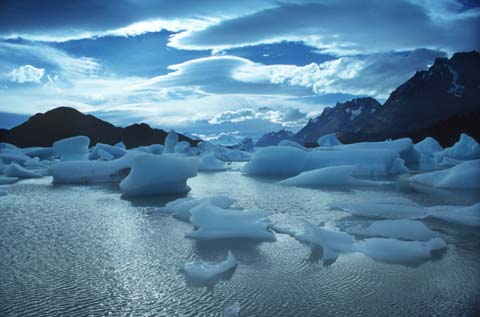
Grey Glacier, Torres
del Paine, Patagonia.
Photo: Tony Costa. Luxury Chile Tours & Travel.
From Puerto Natales, it is only a two-hour drive to Torres del Paine National Park. Covering 242,000 hectares, it is one of the most famous parks in the world. The variety of natural scenery is what makes it so attractive. The main attraction in the park is the Paine mountain range. These rugged, oddly-shaped, differently-colored mountains continue to astound visitors, even after they've spent a few days in the park. The scenery changes constantly because of the movement of the sun and the "UFO-shaped" Patagonian clouds. Around the Paine range, various glaciers spill down from the Southern Ice Field, which is, at 1,350 square kilometers., the second biggest continental ice field in the world. The leading edges of these glaciers are towering walls of ice, up to 120 meters high. Every once in a while, a chunk of ice caves off and thunders down into the lake.
In addition to being a natural wonder of rock and ice, the park is also a paradise for animal and plant lovers. More than 25 different species of mammals, such as grey foxes, guanacos, Chilean deer and pumas, make their home in the park. Birds are especially abundant; there are 105 species, including ñandues (a type of small ostrich), flamingoes, bandurrias, condors, black-necked swans, eagles, loicas and cachanas. Botanists can examine over 200 kinds of plants, including forests of lenga and coigue, which thrive in the microclimate created by the valley's protective walls, and flowers, like orchids.
Atacama Desert.
Photo: Miranda Loh. Luxury Chile Tours & Travel.
The Atacama Desert
The Atacama Desert is the most arid desert in the world. It lies 2,440 meters above sea level, offers spectacular landscapes and is a natural phenomenon. In addition to its natural scenery, the Atacama region offers many cultural highlights, such as the fortresses at Lasana and Quitor or the historical village of Caspana and the church of Chiu Chiu, which provides evidence of Spanish colonial influence.
The idyllic village of San Pedro de Atacama and the modern copper city of Calama are oases in the middle of the desert. San Pedro is the ideal starting point for many sightseeing trips. It offers reasonable, good hotels and many nice restaurants. Experience the spectacular Tatio Geysers at daybreak; the bizarre landscape of the Valley of the Moon around sunset; the vastness of the white and crusty Salt Lake of Atacama, which stretches out as far as the eye can see; and the blue-green, highland lagoons of Miscanti and Meñiques. These are just a few of the highlights this desert has to offer.
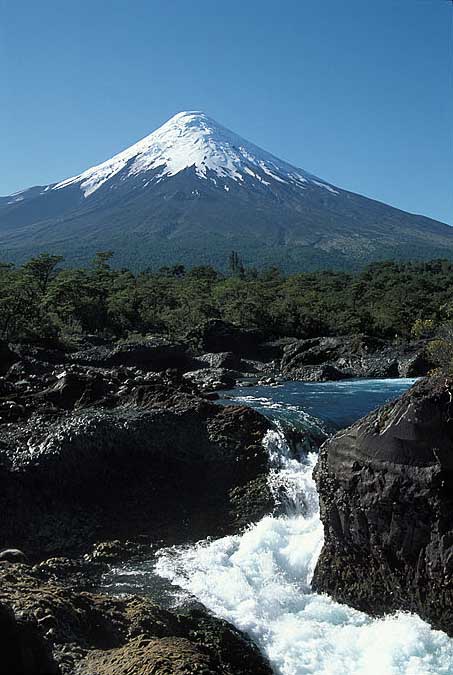
Osorno Volcano and Petrohue
Falls, Lake District.
Photo: Radek Tezaur. Luxury Chile Tours & Travel.
The Lake District
Between Temuco, located 700 kilometers south of Santiago, and Puerto Montt, you find one of the most picturesque lake regions in the world. There are twelve principal lakes in the district, though dozens more fill the gaps and valleys between the main lakes. Many are joined by rivers and streams, which along with the lakes offer some of South America's best freshwater fishing. Nine volcanoes run through the district from north to south, the highest being Llaima, at 3,125 meters. The Lake District is an ideal area to cross over to Argentina. There are four border crossings at passes through the Andes range; none is over 1,300 meters above sea level. One way to cross the border is the famous bus-boat combination between Puerto Montt and Bariloche. Just think about it -- crossing the Andes in a boat!
The region's capital of Puerto Montt is, because of its air, bus and boat services to all parts of Chile, the major gateway to the Lake District and Patagonia. From Puerto Montt, the Navimag ferry service leaves for Puerto Natales. Only a few minutes from Puerto Montt are Puerto Varas, which is situated on one of the biggest lakes in South America. Across the blue water you can see snow-capped conical volcanoes and their images reflected in Lake Llanquihue. Puerto Varas is not only a perfect base for exploring the surrounding area, but it is also a quaint, cheery place to walk around and enjoy the shops and restaurants.
The large numbers of southern rivers invite you to fish, go white-water rafting, hike or take a pleasant boat cruise. The flora and fauna are unique in the world; the Valdivian Rainforest is still virgin and mainly untouched. It contains hundreds of native species, such as the red notro or the alerce, which exists only in this corner of the world. The araucaria, a prehistoric conifer which grows on volcanic soil, is a peculiar tree that always attracts the attention of foreign visitors. The Lake District between Temuco and Puerto Montt is the perfect place to get in touch with nature. Traveling in car is one of the best alternatives for exploring the region. It permits you to explore the natural and cultural attractions in depth. Roads are generally in good condition and daily distances to cover are reasonable. National parks are easily accessible.
Moai at Rano Raraku, Easter Island.
Photo: Cliff Wassmann. Luxury Chile Tours & Travel.
Easter Island
Easter Island, or Rapa Nui, is a unique place. The island is an open-air museum, showcasing a fascinating but mostly lost culture. We still do not know for sure how or why the first inhabitants carved and transported their massive statues, but there is no shortage of guesses. Some say the statue builders were of Peruvian descent, some believe the island is a remnant of a lost continent and still others claim the statues are a result of extraterrestrial influence. However, archaeological evidence indicates the island was first discovered in about 400 A.D. by Polynesians. You will hear from the island guides how King Hotu Matua found the island, and how the "short-ears" rebelled against the "long-ears". The Orongo ceremonial centre is a must; we recommend a guided tour to make the most of it.
Erected moai with red lava rock headdress, called pukao, Easter Island.
Photo: Cliff Wassmann. Luxury Chile Tours & Travel.
The island is triangular in shape; its longest side is the south coast with 22 kilometers, and its widest point is 11 kilometers. At each of the three points of the island there is an inactive volcano. The highest of these is Maunga Terevaka, at 506 meters. It's an odd sensation looking out from the top of this mountain. All you can see is blue sky and blue ocean: no land, no boats or anything else. The geological formation of the island began at the Poike Peninsula about 5 million years ago, with the other major volcanic cones following.
The history of the island and its inhabitants is rather sad, involving slavery, disease and war. Only about two thousand people live on Easter Island today and the great majority of them do so in the small capital town of Hanga Roa. All hotels and restaurants are located in this village. Back in 1935, most of the island was made a national park to protect the archaeological sites and, since 1995, it has been on Unesco's World Heritage List.
Chilean flamingo, Altiplano.
Photo: Walter H. Wust, Rumbos Magazine. Luxury Chile Tours & Travel.
The Altiplano
The extreme, dry landscape of the Altiplano, or highlands of the Andes, has been and still is home to the Aymara indians. Their ancestors' caravan route is marked from the highland to the ocean with hieroglyphics, which you can observe driving up from Arica to the Andean town of Putre. Along this ancient trade route, you encounter historic Pukaras, defensive fortresses of the Incas. The archaeological museum in the Azapa Valley, just twenty kilometers from Arica, has an extraordinary collection of sand-preserved mummies and pre-Incan relics dating back to 10,000 BC.
The beauty of Lauca National Park is beyond compare. The park includes six snow-topped volcanoes and several emerald lakes. It is easily reached from Arica: 160 kilometers to the east and at an altitude of 3,500 to 6,500 meters above sea level. Unesco has declared the area of 137,000 hectares a Biosphere Reserve. During the afternoon in particular, you can enjoy viewing a wide variety of birds, from pink flamingos to several kinds of ducks. All four South American camelids -- guanacos, vicuñas, llamas and alpaca complete this extraordinary scenery.
Endangered Chilean Palms, La Campaña National Park, Central Valley.
Photo: Gentileza Conaf. Luxury Chile Tours & Travel.
The Central Valley
Santiago de Chile, the capital of Chile is located in the central region. This area, a fertile valley between the coastal and Andean ranges, attracted the Spanish explorer Pedro de Valdivia at first sight. It is the oldest Spanish settlement in Chile, founded right at the Mapoche River, which flows down from the heights of the Andean range. Because of its proximity to the Andes, snow-capped peaks are visible from any spot in Santiago. It is a modern and rather bustling city, at least when you compare it with life outside the capital.
But Santiago is not all immense skyscrapers; the city still offers a colonial atmosphere with its architecture, streets and small squares. The cleanliness of the city, and the many well-kept gardens and public parks surprise many a visitor. Like many other large cities, Santiago has a smog problem, which is more profound during winter.
Santiago is a very convenient starting point for visits to nearby cultural and natural highlights. It is in the center of Chilean wine-producing culture. Famous vineyards surround the capital and are generally open to the public. In an hour and a half, you can reach the Pacific coast to see the historical harbor city of Valparaiso or enjoy the beaches at nearby Viña del Mar and Reñaca. In the same direction is La Campaña National Park, a reserve for one of the last remaining forests of the Chilean Palm, a species in danger of extinction. The park is ideal for climbing and hiking, with beautiful and interesting paths that can be enjoyed all year round. The trail from Palmar de Ocoa, on the northern edge of the park, passes through a magnificent palm grove with trees up to 30 meters high and a thousand years old. With a bit of luck you can see wildcats, skunks, eagles and chinchillas. Driving only one hour the other way takes you into the Andean valley of the Maipo River, where you can get a feeling of the more traditional life in the smaller villages or visit the nearby, modern ski resorts.
© 2013 Inka's Empire Corporation, Machu Picchu Luxury Tours. All rights reserved.
